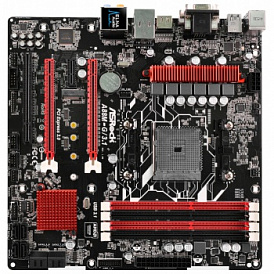How to choose a cooler for the processor
The performance of the cooling system depends not only on speed, but also on the performance of the computer.
How to choose a cooler for the processor: what to look for

When choosing a cooler for the processor, you should pay attention to the following parameters:
-
CPU socket;
-
CPU heat dissipation;
-
Radiator design;
-
The number of teplovodov;
-
Radiator base material;
-
Characteristics of the fan.
Many processors supplied in the BOX configuration already have a cooler in their bundle. However, its power is not enough for good cooling. It is advisable to use the stock cooler only for not very productive processors with heat dissipation (TDP) of 60 W or less.
CPU socket

The type of processor socket determines the design of the socket for mounting the radiator - including the location of the holes on the motherboard. Therefore, buying a new cooling system, you should make sure that it is fully compatible with the chip used.
Usually information about sockets indicate directly on the packaging and in the technical characteristics of the radiator.
CPU heat dissipation

The cooling system must be sufficiently productive to ensure the operation of the processor in the normal temperature range even under high load. And since the intensity of chip heating directly depends on its power, when choosing a cooler, it is necessary to pay attention to the value of the maximum power dissipated by it.
It is desirable that the maximum power dissipation, which is measured in watts, was greater than the heat dissipation (TDP) of the processor. In this case, even if the cooler becomes clogged with dust, it will not reduce the performance and durability of the chip.
Virtually all modern Intel processors (including i3, i5 and i7) and AMD work in one of three power options - 60, 95 or 125 watts. From this parameter, and you need to make a start, choosing a cooler.
Radiator design

Radiators in modern cooling systems are presented in the following structures:
-
Aluminum structure. Such radiators are the cheapest, but due to the low thermal conductivity of the material they are not suitable for powerful processors;
-
Stacked aluminum or copper plates. Radiators of this design are quite effective for most low or medium power processors, but now they are almost never encountered, since they require high fan performance;
-
Horizontal radiators with heat ducts (thick copper tubes). They most efficiently remove heat from the processors and therefore can be used even in high-power systems. However, they have a drawback - due to the horizontal placement of the fan, hot air is led to the motherboard, which can lead to its damage;
-
Vertical radiators in teplovodami. Such radiators are best suited for high-powered processors (for example, the most productive gaming chip in 2017, the Intel Core i7-7700K). The disadvantage of the design is its bulkiness - it is very high, so it may not fit in a standard case.
Thus, for low-power processors, aluminum radiators or models from stacked plates are suitable, for medium-power ones, horizontal ones with heat pipes, for high-power ones, vertical ones with heat pipes.
Number of thermal ducts
In vertical and horizontal coolers with heatworms, copper tubes are designed to divert heat from the processor surface. And the more of them - the more efficiently the cooling system works. However, an increase in the number of teplovodov increases the cost of the cooler.
For processors of average power (such as i3 and i5, and similar from AMD) coolers with two teplovodami will suit. For more productive chips (i7, AMD Ryzen 7), three-tube configurations are needed.
Radiator Base Material
The bases of radiators are of two types - solid and through. They differ in the area of the contact pad and the characteristics of the placement of the plates. For radiators with a solid-type base, the contact area is large, and all the plates are directly above it, not protruding anywhere in the horizontal plane. The through base is equipped with a small plate, and the plates approach it from all sides.
Radiators with a solid base are preferred because they are easier to clean from dust and have a large contact area with the processor casing.
The base can be made of aluminum, have a copper insert or a complex structure with contacts of heat conductor tubes.
Aluminum base coolers are suitable only for low-power processors. Slightly better with the task of cooling cope radiators that are equipped with a copper plate - but they are also undesirable to use with high-performance processors. For Intel Core i7 or AMD Ryzen 7 chips, coolers that use “direct contact” are better suited - when the basis of thermal fluids is brought to the contact pad.
Fan Features

The most important fan characteristics are:
-
The size. The bigger, the better. And quieter;
-
Bearing. The most optimal - hydrodynamic and ball;
-
Turnovers. Better a big cooler with 1500 revs than a small one with 4000;
-
Built-in revolutions controller (PWM). Great, but only if the motherboard also supports PWM;
-
Number of contacts. If on the motherboard 4-pin connector for the cooler, it is worth taking just such a fan;
-
Noise level. Less is better. The quiet fans include 25 dB;
-
Air flow rate (CFM). For powerful processors, the more - the better.
Manufacturers
Among the best manufacturers of cooling systems include CoolerMaster, Deepcool and Thermalright. However, their coolers have a relatively high price.
In the following articles, our experts tell you how to choose a processor for the computer and secrets select processor intel.
Attention! This material is the subjective opinion of the authors of the project and is not a guide to purchase.













